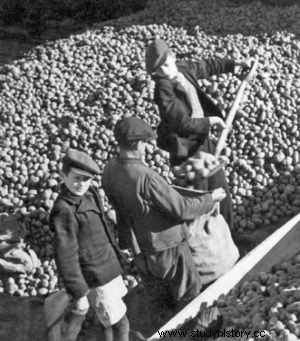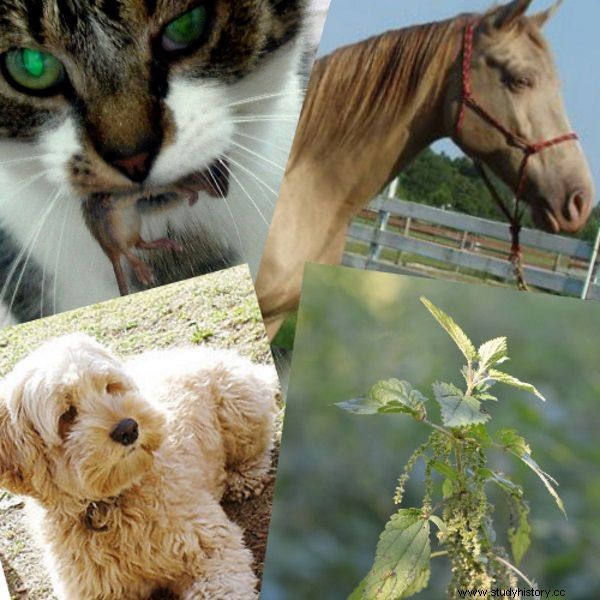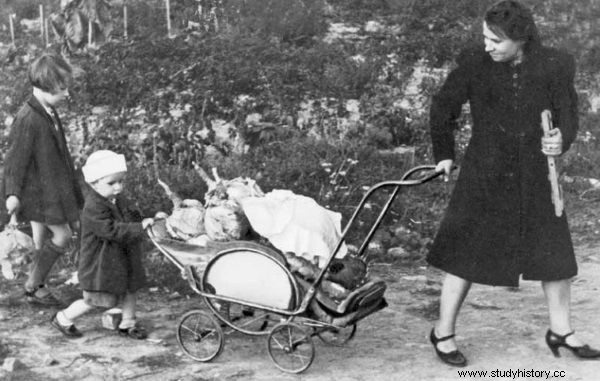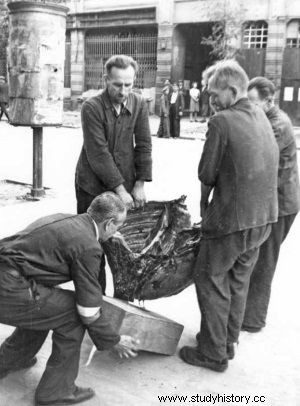In the face of true hunger, nothing is inedible. Millions of inhabitants of occupied Poland found out about it. Check what our grandparents had to eat.
The wartime realities forced Poles to look for unconventional solutions and fill their bellies with what was at their fingertips. We present to you ten strange, surprising and even disgusting things that our grandmothers used to make miracles during the war.
Pigeons
Today it is difficult to imagine the landscape of Polish cities without "flying rats". It was similar at the beginning of World War II. However, the fate of the pigeons was not easy. With time, when it became more and more difficult to find a hen for broth, city dwellers began to greedily look at the city birds. It was enough to pour a few grains on the windowsill, and then it was like in the story of Jan Rybak (from Warsaw, born in 1929):
[…] the window was held on a string, when the pigeon climbed only on the windowsill, grandma or mother pulled the string, the pigeon was in the apartment and in the pot.

When the potatoes were running out, the hunger had to be satisfied with something else.
Card Bread
Clay, black, bitter, crumbling. Each of these adjectives was used to describe the occupation "wholemeal", but they cannot reflect the taste and health benefits of this bread.
It was more like a bad sort of coal than bread and the digestive system vehemently protested against packing this substitute of bread in him. Anyway, from these "protests" was derived another name - sound engineer. A hefty batch of card bread made it possible for a real concert.
Crows
These birds were not eaten as often as pigeons. Crows are more intelligent than them and the method with seeds and a window would not work on them. A better way was needed.
One of the readers of "Historical Curiosities" introduced it to us. Under the information about the tasting of war dishes, which we are organizing at the Warsaw Uprising Museum, Mrs. Hanna left her family story about hunting for birds.
A fourteen-year-old boy took a forgotten airgun, from which he shot two crows for dinner at the Warsaw Marymont.
Significantly for those times, his father was in no way angry with him for what he had hunted. After all, dinner is lunch, it's important to fill you up.
His rage was caused by the arbitrary use of the air rifle. If the Germans found out about the weapon, it could end tragically ...
Horses
In our tradition, a horse is a friend of a man who helps him in his work every day, and when the need arises - also in the fight against the enemy, he gives invaluable favors.

During the occupation, everything was eaten, including recent pets.
During the war, for their own good, Poles had to get rid of stereotypical thinking. Horse meat has become a regular item on the menu. Of course, there were those who, following the cavalry traditions of the Commonwealth, refused to put their mounts on the plate. However, they were in the minority.
The rest of us ate the horse's cutlets with relish. During the Warsaw Uprising, horse meat became so valuable that Poles and Germans fought for the dead animals, sparing no bullets.
Nettles
When the hostess ran out of classic plants used in Polish cuisine, or when she sold them at the market for a little kerosene, we had to look for a replacement in the immediate vicinity.
Polish women, proving their resourcefulness, started to cook even from weeds.
With a little creativity, you can make spinach from nettles and lebioda. It is enough to go outside, take the young shoots of plants and prepare them at home just like the leaves of real spinach, blanching and serving with garlic.
In my own family, there is a belief that the one made of nettle is even tastier.
Perz
Another weed used during the occupation was couch grass. This herb, which is resistant to chopping and spraying, is extremely difficult to eradicate, and during the occupation it fed many people. Instead of blunting it in flower beds, couch grass was used to make flour, which was normally used to make baked goods. It was also added to ordinary cereal flour.
Dogs and cats
During the uprising, the food stocks accumulated in the capital ran out at an alarming rate. There was no room for scruples. Both the civilian population and the insurgents had to eat.
When the dog died from the explosion, no one thought about it, just framed what was left of the pet and packed it into the pot as a meat insert in the soup.

When there was no spinach on the plot, you could always pick up some nettles on your way back ...
It was the same with cats. Recent pets were even hunted. When insurgents came to the cafeteria for lunch, colleagues aware of the meat's origin would often start… meowing or barking while they were eating.
Years later, one of the fighting women recalled :I must even say that the best cats were, like veal.
The cat cooked in suntan oil was also eaten completely unknowingly by Tadeusz Bór-Komorowski. We wrote about it in a separate article.
Acorns
Properly prepared acorns could replace almost anything. You could make flour, coffee, and even eat them like potatoes. Acorn flour can be used to bake bread or flatbread, and after cooking and brewing, it can be successfully replaced with a small black one.
You can read how exactly acorn coffee is prepared in one of our special guides . We tested it on our own throats. And we also gave TVP journalists a try.

At the time of the uprising, even a piece of horse carcass was worth its weight in gold.
Clover and birch bark
These two unusual products were already used by Polish women during the First World War. Anyway, in the villages of the pre-harvest season, many housewives used ground birch bark to bake bread.
In the memoirs, you can even find information that just before the new crops appeared, there was more birch in bread than wheat .
After the outbreak of the war, Polish women immediately dusted off the old crisis recipes.
Pencils and newspapers
When all the drawers in which the bread was kept were cleaned to the last crumb, and hunger was an unpleasant scrub in the stomach, the children did everything to feel the feeling of satiety, even for a moment.
It happened that Polish children under the occupation ate, for example, newspapers (first unprinted places, later also those covered with paint). But not only. As Bogumił Janusz Żórawski recalls:
We also chewed on the pencils as the pieces of wood stayed in our mouths for a long time. We just had the pleasure of moving her mouth and having something in her.
***
The article was based on materials collected by the author while writing the book "Occupation from the kitchen".
"Okupacja od Kuchni" is a moving story about the times when illegal pig slaughtering could lead to Auschwitz, vegetables were grown in the courtyards of tenement houses, and used coffee grounds were traded on the black market. It is also an amazing cookbook:full of original recipes and practical tips from 1939-1945. We recommend!
